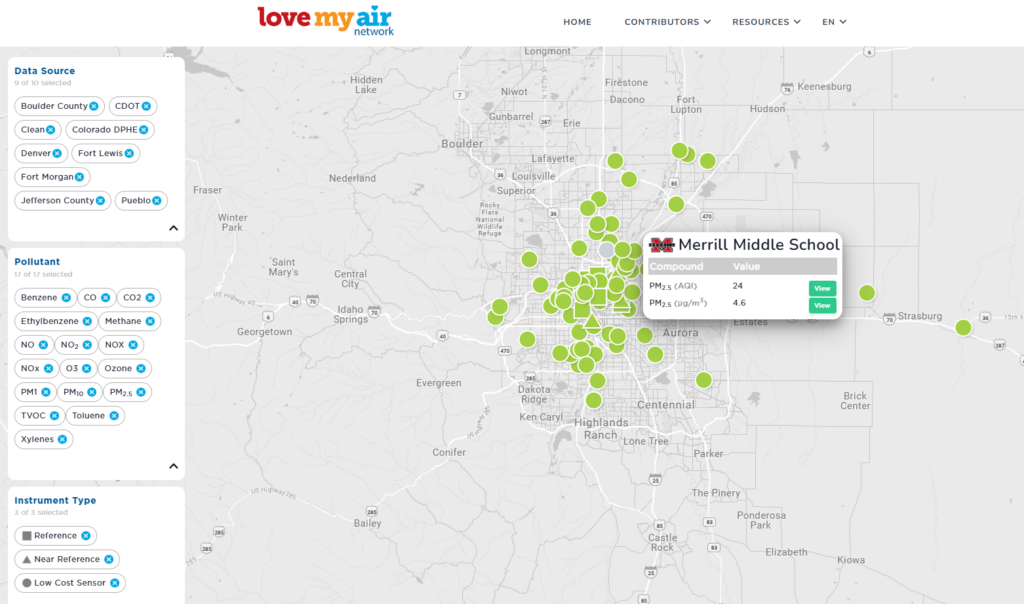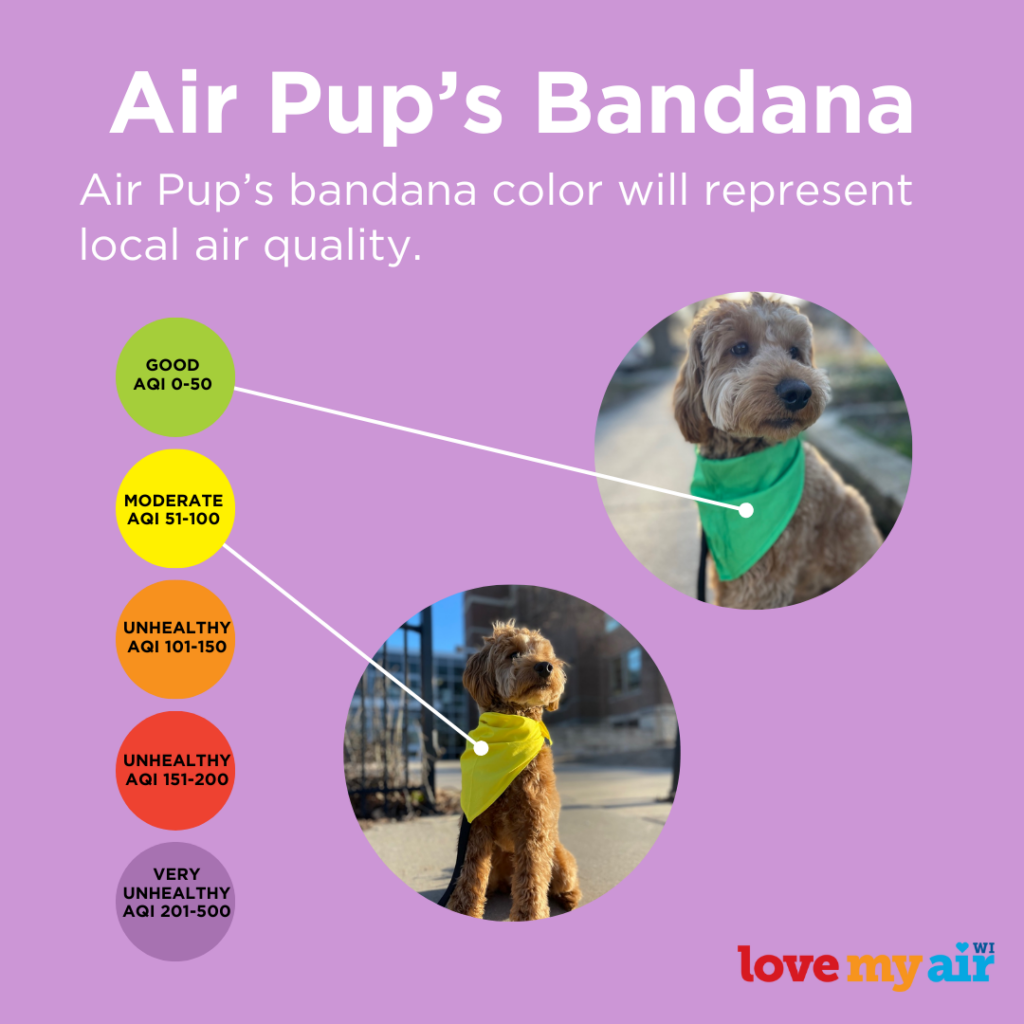Across the country, urban communities are grappling with the health and environmental impacts of air pollution—especially in areas where traffic, industry, and construction are part of daily life. Recognizing that better data leads to better decisions, a program known as Love My Air is transforming how modern cities approach air quality monitoring. Love My Air is a citywide monitoring network designed to provide air quality data in real-time via sophisticated air pollution technology. Through public-facing websites and informative kiosks, it provides access to local air quality data, with the goal of informing residents about potential health risks, while encouraging behavioral changes to improve air quality. It works by using a network of solar-powered low-cost air sensors and high-quality multi-pollutant monitoring stations placed throughout the community to monitor air quality.
By placing these sensors and monitoring stations in schools, healthcare centers, and neighborhoods, and pairing that data with community engagement and education, these cities are empowering residents—especially children and vulnerable populations—to understand their environment and take meaningful action. At the heart of this initiative is Sensible EDP™ powered by Montrose, helping to translate air quality data into insight, access, and impact.
Addressing Air Quality Challenges in Urban Communities
Air pollution remains a pressing issue in many U.S. cities, with urban areas like Denver, Colorado, and Milwaukee, Wisconsin, facing significant challenges due to construction, traffic congestion, and industrial activities. These factors contribute to poor air quality, which impacts public health, particularly among children and vulnerable populations.
Recognizing the urgent need for community-driven solutions, the Love My Air program was initiated to provide real-time air quality data, promote environmental education, and empower residents to take proactive measures to improve air quality.
Denver's Initiative: A Model for Community Engagement
Launched in 2018 through the Bloomberg Mayors Challenge, Denver’s Love My Air program established a citywide air quality monitoring network in partnership with Denver Public Schools. Utilizing modern, low-cost air pollution sensors, the program provides real-time air quality data to the community through a public website. Strategically placed sensors monitor particulate matter (PM2.5) and other pollutants across 155 square miles, focusing on areas with high traffic and pollution levels. Website visitors are able to click through to their specific community location to see current air quality conditions.

The program expanded from 9 schools in the pilot phase to more than 35 schools today, now reaching thousands of students and families across the Denver Public School system. Sensors were strategically placed in schools with above-average asthma and free/reduced lunch rates, addressing the city’s most impacted populations. Operations staff have used real-time dashboards to respond to pollution spikes by adjusting school activities.
The program’s success has led to its expansion into healthcare centers, including Tepeyac Community Health Center, Inner City Health, and Kaiser Permanente East Denver Medical Offices, further enhancing community access to air quality information. The EPA is considering Denver’s Love My Air program as a potential national model for community-driven air quality monitoring.
Wisconsin's Approach: Integrating Education and Health

Building on Denver’s success, Children’s Health Alliance of Wisconsin launched its Love My Air program in 2023, focusing on integrating air quality monitoring into schools and communities. In partnership with Milwaukee Public Schools, the program installed air quality sensors at 15 schools in neighborhoods with high asthma cases.
The initiative also provides teachers with lesson plans on air quality awareness and engages students through interactive tools like the AQI Activity Guide and the Air Pup mascot, which uses colored bandanas to indicate local air quality conditions. Students act as “air quality champions,” sharing real-time data with their peers, teachers, and families—helping to drive behavioral changes like reduced vehicle idling during school pick-up and drop-off.

The program is striving to expand statewide, creating a comprehensive air quality network that supplements existing data and enhances community awareness through student-friendly education in both rural and urban areas.

Montrose & Sensible EDP: Driving Innovation and Impact
As the expert partner behind the scenes, Montrose Environmental Group brings together technical leadership, strategic vision, and on-the-ground execution to support community-focused environmental solutions like Love My Air. Working closely with city agencies, school districts, and health organizations, Montrose ensures the success of these programs by coordinating sensor deployment, validating data quality, and supporting communities by making air quality data available via public-facing websites. By pairing advanced technology with a human-centered approach, we help bridge the gap between environmental data and public health impact.
Through Sensible EDP—Montrose’s real-time environmental data platform—we translate raw air monitoring data into practical information that communities, schools, and decision-makers can act on, elevating environmental awareness and community health. The expansion of the Love My Air program across Denver and Wisconsin demonstrates the power of collaboration, technology, and education in advancing environmental equity.
By making real-time data available and understandable, Love My Air empowers residents to be stewards of their environment—laying the groundwork for healthier communities, stronger public engagement, and scalable models that can benefit cities nationwide.
Key Stats
- 2 States and Growing: Active Love My Air programs in Colorado and Wisconsin, with plans for broader expansion.
- 50+ Community Sites Equipped: Air quality sensors deployed across over 50 schools, healthcare centers, and community hubs.
- Over 150 Square Miles Monitored: Urban areas under continuous air quality surveillance to support data-driven decisions.
Need help with a community air monitoring project?
Ready to see the platform or have a question for our experts? Use the form below.